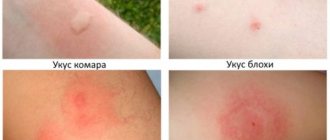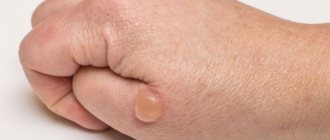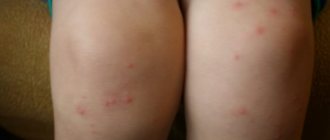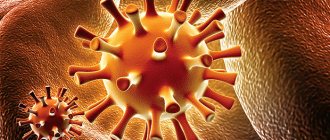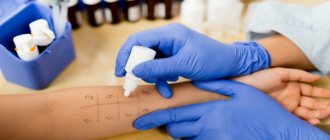Rash on hands
Every person experiences a rash on their hands to one degree or another in their life. Surely you will remember episodes from your childhood when, frozen in the cold, you came home and discovered a red rash on your hands, which your mother called “chicks.” And after her hands warmed up, my mother lubricated them with cream, and the rash went away. In medical terms, pimples are called simple dermatitis. In adulthood, we also often encounter manifestations of simple dermatitis.
Causes of the rash
Many reasons can cause a rash on the hands. The most common of them are the following:
- insect bites,
- viral infection,
- allergic reaction,
- skin disease.
The most common skin diseases are atopic dermatitis and contact dermatitis. Both conditions are characterized by the appearance of a rash on the hands.
Atopic dermatitis. How to treat?
The first manifestations of atopic dermatitis occur in the first months of a child’s life. However, there are cases of atopic dermatitis appearing in both adolescence and adulthood. A red, itchy rash appears on various areas of the skin, including the hands. The skin is flaky and dry to the touch, and with a long course of the disease, keratinization of the skin occurs - the skin enhances its natural pattern and thickens.
In one family, several generations may suffer from atopic dermatitis, that is, there is a clearly defined hereditary predisposition. This pathology is treated systemically, under the supervision of dermatologists and allergists. In addition to anti-allergy drugs, hormone therapy is often used in the form of ointments for topical use or systemic drugs in the form of tablets and injections.
Rash from contact dermatitis. How to treat?
This type of dermatitis occurs as a result of skin contact with any irritant (allergen). A type of such dermatitis is the so-called. housewife dermatitis, which occurs due to constant contact with household chemicals without the use of gloves. A symptom of such dermatitis is the appearance of a rash on the hands. In addition to household chemicals, your hands are also exposed to dirt and moisture. Household detergents, especially disinfectants and bleaches, are a very strong irritant to the skin of the hands. And often it is quite sufficient to simply refuse to use chemicals in favor of old forgotten recipes (such as mustard, soda) or to use rubber gloves every time, under which light cotton gloves should be worn.
Allergic reactions
There is another type of contact dermatitis - healthcare worker dermatitis. It manifests itself in the form of an allergic reaction to the latex from which disposable medical gloves are made. The rash is localized in the area of the hands. Here again, only refusing to use disposable gloves can help. Various metals (except gold and silver) can also cause contact dermatitis. For example, when wearing jewelry.
Types of rash
Most often, the rash looks the same; it is very difficult for a non-specialist to determine its type, but in some cases, skin rashes have their own characteristics, which can be used to narrow down the range of possible diseases.
Types of rash on fingers:
- ecthyma - the rash is covered with a crust;
- lupus erythematosus – peeling;
- rashes in the form of pimples;
- bubbles and blisters;
- dry rash;
- vesicle - wet rash;
- macula – change in skin color;
- white rash;
- subcutaneous rash;
- red, inflamed rashes;
- manifestations of herpes infection;
- pustular rash.
Why do my fingers itch?
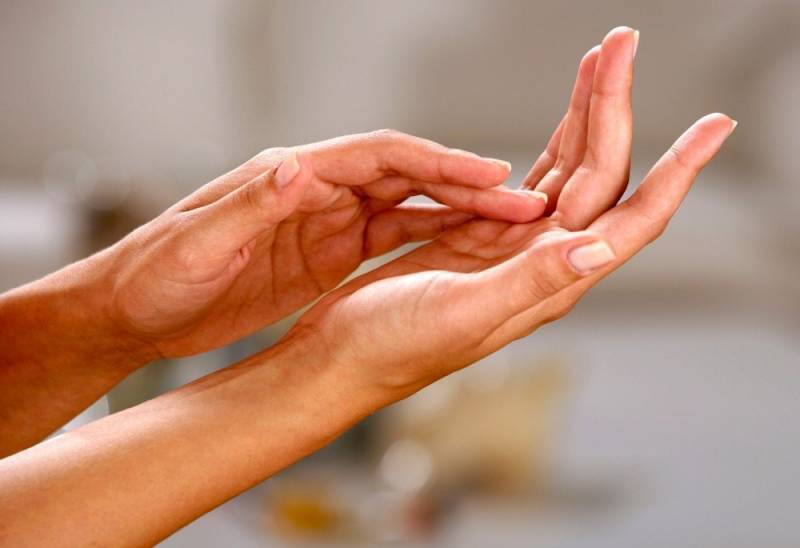
Quite often, a rash on the fingers and toes is a sign of a certain disease. To find out the etiology, you should visit a specialist. The conclusion suggests itself - if the rash on the fingers itches and becomes inflamed, it is necessary to look for the cause, and not just deal with unpleasant symptoms.
The rash may appear as a result of:
- Allergies - this can be food allergy, cold allergy, or also provoked by external irritants (exogenous).
- Skin pathologies are the most common cause of rashes on the fingers. If the skin of your hands is covered with a rash, itches and itches, you should contact a dermatologist; these may be the following skin diseases: eczema, lice, scabies, neurodermatitis, urticaria.
- The negative influence of external factors is most often mechanical, chemical or temperature. For example, a small rash on the fingers may be associated with very high or low temperatures or wearing synthetic clothing. People with sensitive and dry skin especially often suffer from this rash. This pathology is called contact dermatitis.
- Problems in the functioning of internal organs. The human body is a single system, and skin rashes may indicate diseases of the liver, gastrointestinal tract, kidneys, thyroid gland, and lymphatic system.
- Too much emotional stress - in this case, a rash between the fingers and other areas of the skin appears in people who are emotional and overly excitable.
- Taking certain medications is a fairly common side effect of tablets and some ointments.
Allergic causes
The causes of rashes on the hands are often associated with allergies. It can manifest itself in different ways, that is, in the form of various diseases.
Dermatitis
Dermatitis can cause the formation of an intense rash on the hands or other areas of the epidermis of the hands. Rashes often appear on other parts of the body - back, chest, face, knees, etc. The most common are contact and atopic forms of dermatitis. Less commonly, patients are diagnosed with the dermographic variety of the disease, but it is characterized not by a small rash on the hands, but by swelling and white stripes that remain on the skin even after minor mechanical impact.
Dermatitis occurs due to contact of the epidermis with allergens, as well as after strong emotional experiences. They manifest themselves as redness, swelling, itching and burning of the skin. The rashes on the hands are usually grouped and form large hyperemic spots. A few days after the appearance of this problem, the problem areas begin to peel and turn pale.
Other types of allergies
Allergies are one of the most common causes of itchy rashes on the hands. There are several varieties of this group of diseases, the most common of which are:
- Food allergies. It develops when a person has hypersensitivity to a certain product or foods. Typically, a symptom of such a deviation is urticaria on the hands, accompanied by itching, burning, redness and the formation of small blisters with water. This is one of the signs that bothers patients the most.
- Drug allergy. Occurs after taking certain medications. Most often, urticaria on the palms with this pathology appears after antibiotic therapy, hormone therapy, the use of antidepressants, and anesthesia.
- Allergy to plant juice and pollen. When hypersensitive skin comes into contact with some herbs, a sharp reaction of the body may also occur. An allergic rash on the hands is accompanied by blisters, severe burning, pain when pressing on the affected area, and redness. After a few days, the skin begins to peel off, and painful wounds may form in place of the blisters. Hives on the hands are often caused by the juice of white elderberry, hemlock, pollen of buckwheat flowers, etc.
- Allergy to cat and dog fur. More precisely, such rashes on the hands appear not because of the wool itself, but because of the allergens that are on it. It can be the same plant pollen, urine and feces of a pet, particles of allergenic food.
An allergic rash on the back of the hand must be treated comprehensively. For this purpose, antihistamine tablets, antiallergic ointments and herbal infusions with desensitizing properties are used.
Photodermatitis
A specific cause of the appearance of red spots on the crook of the arm is photodermatitis. This disease is popularly called sun allergy. In fact, such an inflammatory reaction of the skin can only appear in the presence of predisposing factors - endogenous and exogenous. For example, after taking ibuprofen or hormonal drugs, when overusing cosmetics or perfumes, etc.
Allergy
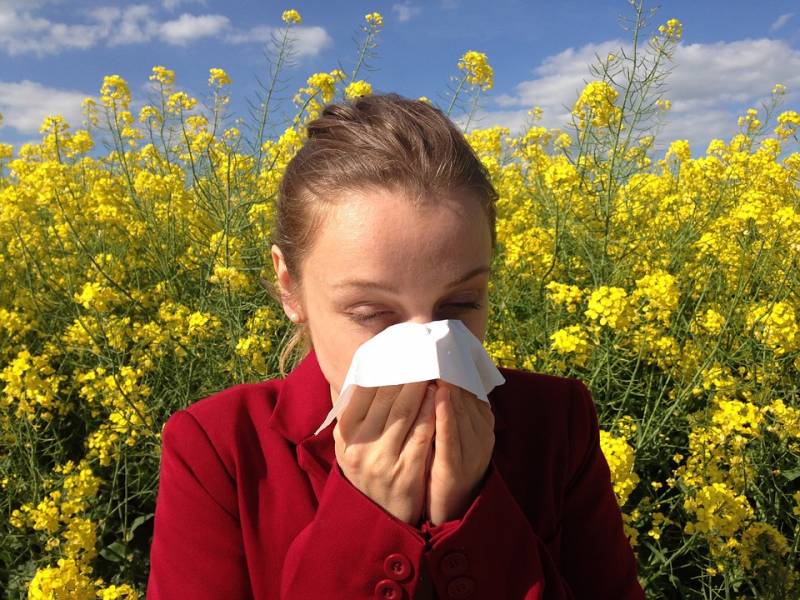
Allergies are the most common cause of skin rashes and can be of the following types:
- Contact dermatitis occurs after direct skin contact with an allergen.
- Toxicoderma - the allergen enters the blood in a hemogenic manner.
- Urticaria is a rash on the fingers in the form of blisters, reminiscent of a nettle burn.
- Atopic dermatitis is a hereditary disease that begins to appear in childhood.
Treatment of allergies first involves eliminating the allergen, and then taking antihistamines and anti-inflammatory drugs.
Eczema
An inflammatory skin disease. Occurs due to metabolic disorders and decreased immunity. True eczema usually appears on the wrists. It is characterized by the appearance of swollen red areas with a weeping surface. Bubbles with a cloudy liquid inside form on the spots. After opening them, erosions remain.
Larger rashes are located along the outer edge of the lesions. As the ulcers heal, the spots become covered with scales. In advanced cases, the skin on the fingers may peel off. For treatment, hormonal drugs, sedatives and antiallergic drugs are used. Sometimes plasmaphoresis is performed. External treatment is carried out with anti-inflammatory ointments.
We invite you to familiarize yourself with age spots on the hands after 50 years
Infections and parasitic diseases
Fungal infection of the skin manifests itself in the form of an itchy rash on the fingers in the form of blisters; the rash can be red or white. Infection occurs through contact with a sick person; the risk increases if there are wounds or cracks on the skin. For some time, a fungal infection may not manifest itself in any way, but when the immune defense decreases (colds, stress, taking antibiotics), the fungus becomes more active, and then the clinical picture of the pathology can be observed.
Infectious lesions of the body can also be accompanied by skin rashes. It could be rubella, measles or chickenpox. These infections are more common in childhood, but sometimes occur in adults.
Streptoderma is considered a rather dangerous infectious disease; in this case, blisters appear on the fingers, the rash can be yellow or white, and there is a cloudy liquid inside the blisters. When the blisters burst, a crust forms in their place, which will remain until the person eliminates the streptococcal infection.
As for parasitic diseases, a rash on the fingers may appear as a result of infection with scabies mites.
Infectious and inflammatory skin diseases
The appearance of redness, itching, and swelling of the skin on the hands may be a consequence of the development of inflammatory processes. It is important to understand that many of them are infectious in nature and are contagious.
Psoriasis
A rash on the crook of your arms, especially on the outside of your elbow, may indicate psoriasis. The pathology has a predominantly “nervous” etiology. That is, it often develops against the background of severe and prolonged stress and nervous disorders. Although it is possible that psoriatic small red spots may appear on the hands due to pathologies of internal organs.
Skin diseases of fungal etiology
Red spots on the hands that itch are often the result of fungal dermatological pathologies:
- Dermatomycoses. They can develop through direct contact with an infected person, as well as through household items. You can easily become infected with this disease while using someone else's towels, wearing someone else's gloves, etc. Characteristic symptoms are red rashes on the hands, itching and burning. It is noteworthy that the fungus on the skin causes the formation of a ribbed surface. It can be crimson or have a yellow-gray tint. There may be severe peeling on the spot itself.
- Depriving. This is a whole group of diseases that differ in the causative agent and the characteristics of the rash. But if a spotty rash appears on the inside of the arm, which looks like a round or oval spot, flaking and weeping from time to time, then this should alert you.
Important! These diseases are highly contagious and must be treated immediately. Throughout the course of therapy, it is necessary to limit the patient’s contact with other people.
Diseases of viral etiology
Rashes on the wrists with itching and severe redness may be the result of certain pathologies of viral origin:
- Rubella. This is a highly contagious infectious disease, the transmission of which only requires short-term contact with the skin of a sick person. The disease is accompanied by severe redness of the skin, damage to the lymph nodes and mucous membranes.
- Corey. Another extremely dangerous viral pathology, which is characterized by the first appearance of white spots on the mucous membranes of the oropharynx. After a few days, a rash appears on the hands in the form of pimples, which itches and has a crimson color.
- Herpes. A herpes virus infection on the hands is evidence of the presence of type 3 HHV in the body - Varicella-Zoster. It causes the development of herpes zoster. At first, hyperemia and swelling appear, then a vesicular rash appears on the wrist or other part of the epidermis of the hands.
Important! Each of these diseases has its own causes of development. The pathogen also differs between them. In view of this, you should not make a diagnosis yourself, based only on the visual clinical picture. If rashes appear on the hands, and then on the whole body (or, conversely, the rash first appears on the body and then affects the hands), then you must immediately seek medical help.
Pathologies of internal organs
For liver problems, in addition to the rash, the following is observed:
If there are disturbances in the gastrointestinal tract, skin manifestations look like red spots that become crusty. In some cases, rashes appear not only on the hands, but also on the neck and face.
If the sebaceous glands are disrupted, dyshidrosis develops. Blisters with liquid inside appear on the hands. The rashes are itchy and itchy.
When metabolic processes are disrupted, keratosis pilaris develops. In this case, the skin becomes keratinized, which leads to inflammatory processes in the hair follicles, as well as to the appearance of a rash on the hands.
Hormonal imbalances provoke excessive secretion of sebaceous secretions, which can result in pustular formations appearing on the hands.
Vitamin deficiencies and decreased immune defense are accompanied by blistering formations that become crusty. Peeling and layering of the skin is also observed.
Symptoms of urticaria on the hands
The main symptom of the disease is the appearance of blisters on the skin. They can provoke a sensation of itching and a local increase in temperature. In severe cases, urticaria causes severe swelling, the most dangerous manifestation of which is considered to be Quincke's edema.
Most often, the disease affects the limbs, but the location of the rash may vary. After adequate therapy, the skin recovers quite quickly, and there are no spots or scar changes left on it.
Since the disease is often accompanied by itching and burning sensations, patients become irritable.
They may experience general weakness, sleep disturbances, and headaches. If the solar form of the disease develops, the rash is accompanied by breathing problems and weakness in the heart area.
Redness
When the hands are affected, the first symptom is redness of the skin. In this case, a red rash appears, which is accompanied by severe itching. It causes significant discomfort to a person.
The rashes can have different sizes. Burning and itching make a person more irritable. He develops insomnia and headaches. An increase in body temperature and general weakness may occur.
Peeling
The individual rashes that accompany urticaria usually disappear within 24 hours.
If the blisters persist beyond this period and leave behind peeling and age spots, this indicates other diseases resembling urticaria. For example, it could be urticarial vasculitis.
Small, red rash
Quite often, with this disease, a small red rash appears on the skin of the hands. Individual rashes usually disappear after 24 hours. If such symptoms appear as a result of an insect bite, they can persist for 2 days.
Blisters
This is the main symptom of hives. Such rashes can vary in size and are often accompanied by severe itching. With this disorder, body temperature often rises. In difficult situations there is a risk of developing swelling.
In the allergic form of the disease, the blisters disappear within a few days. They do not leave peeling, pigmentation or vascular patterns. With the development of urticarial vasculitis, symptoms persist for several days, after which pigment spots appear on the skin. After a certain time they disappear.
Cracks
Scratching watery blisters may cause them to burst. As a result, painful cracks appear in these areas. They are accompanied by a pronounced itching sensation and pose a danger from the point of view of infection.
Ulcers
In advanced cases, urticaria can provoke the appearance of weeping ulcers on the skin of the hands. This is a fairly serious symptom that requires qualified medical care.
The appearance of ulcers increases the likelihood of infection through the skin, which poses a health hazard.
Find out what allergies look like. What is an allergy in the form of urticaria? The answer is here.
Viral infections
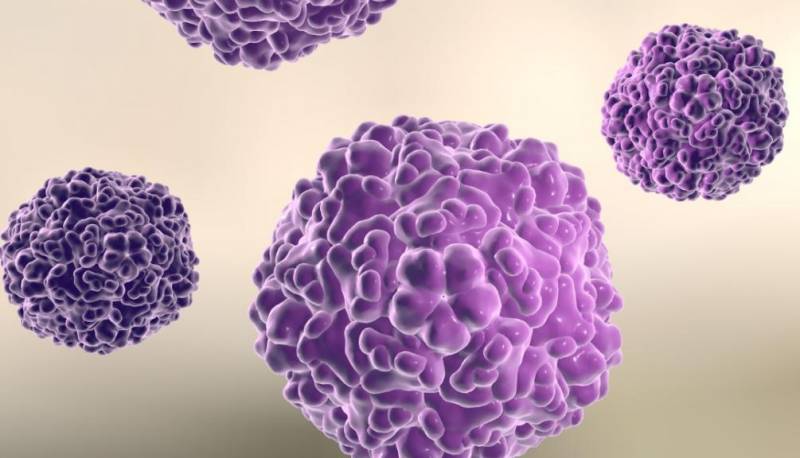
The viral cause of hand rash is most often associated with herpes. The herpes simplex virus, which appears as a vesicle on the lips, is a source of infection. If, while treating your lips, the virus enters a wound on your hands, it can cause similar rashes. Genital herpes can get on the skin of your hands in exactly the same way and cause rashes on them. Therefore, when treating affected areas, extreme caution must be taken, and be sure to thoroughly wash your hands before and after the procedure.
Photo of a rash in a child with explanations
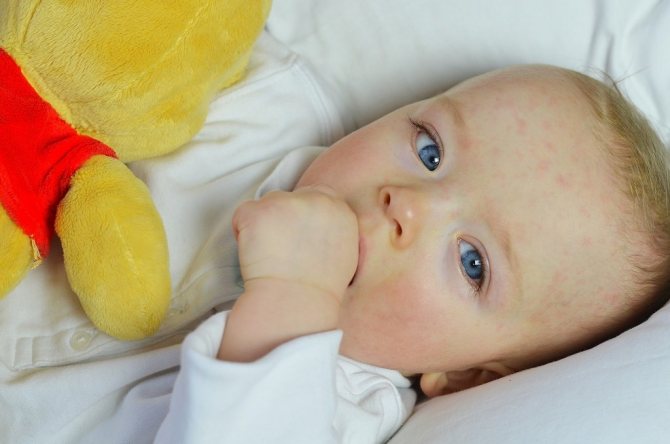
There are a number of pathologies accompanied by the appearance of pathological formations on the skin in the form of vesicles, pimples, papules, vesicles and other manifestations. Let's look at common diseases that occur in childhood.
Atopic dermatitis is a chronic allergic disease that occurs in children from infancy. Pathology occurs in patients with a hereditary predisposition to atopy. Various factors provoke this condition. Among them are:
- genetic predisposition;
- disruption of metabolic processes in the dermis;
- imperfection of the immune system;
- maternal malnutrition during pregnancy;
- the effect of various irritants on the child’s skin.
Symptoms of the disease include redness of the dermis. Localization of the rash is observed on skin folds, legs, arms, and torso. The disease is diagnosed mainly in children under one year of age.
In the photo you can see what atopic dermatitis looks like in a child
Treatment of pathology is carried out comprehensively. In this case, medications, traditional methods, and preventive measures prescribed by a dermatologist are used.
Seborrheic dermatitis
Dermatitis of this type is characterized by the development of an inflammatory process in the scalp area. The pathology is caused by fungal microorganisms from the genus Malassezia furfur. Under the influence of their vital activity, symptoms characteristic of the disease appear on the child’s skin. These include:
- dry dermis;
- the appearance of yellow crusts on the head, forehead, and in the area of the ears (gneiss);
- itching and peeling;
- redness of the dermis.
What seborrhea looks like in the photo can be seen below
Treatment of the disease is carried out under medical supervision using exfoliating, anti-inflammatory, and emollient agents.
Diaper dermatitis
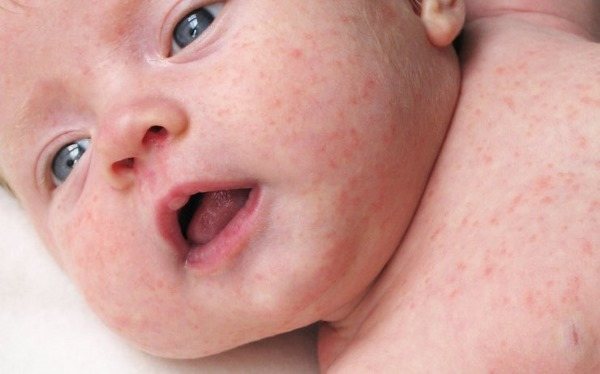
From the name it is clear that this type of rash appears in babies with prolonged contact with irritants such as urine and feces. The cause of the disease is improper care or insufficient hygiene. A rash can also be caused by poor-quality underwear or diapers.
The danger of diaper dermatitis is that if not treated in a timely manner, the baby may develop ulcers and erosions in the genital area. Often a bacterial infection occurs, which significantly complicates treatment.
Diaper dermatitis in the photo
Stages of diaper dermatitis
Treatment of the rash is carried out by observing the rules of hygiene, using anti-inflammatory, emollient, disinfecting creams, and herbal baths.
Contact dermatitis
This type of allergic reaction occurs in children due to irritation of the dermis by various factors (seams on clothing, scratches, cosmetics, and so on).
Rash with contact dermatitis in the photo
Treatment of the disease is carried out exclusively by eliminating the irritant. If the factors that provoke rashes are not removed, any hygiene products and medications will be ineffective.
Acne in a child
Acne occurs in children at any age. There are quite a few reasons for inflammation. Among them are allergic reactions, the influence of mechanical damage, bacteria, hormonal imbalance and metabolic processes in the body.
There are several types of acne. These include papules, pink or red spots, ulcers, and vesicles. Acne can be localized throughout the body. Most often they occur on the face, chest, back, and buttocks.
Photo of acne in a child
Treatment is carried out depending on the cause that provoked this condition. To find out, you should show the baby to a dermatologist and undergo the necessary laboratory tests.
Chicken pox
Chickenpox or varicella is a viral disease that occurs most often in childhood. The disease is highly contagious and is transmitted by airborne droplets. After suffering from chickenpox, the body develops lifelong immunity.
Chickenpox symptoms:
- high temperature (38-39 °C);
- general deterioration of health;
- the appearance of rashes on the dermis;
- severe skin itching.
The peak temperature coincides with the massive appearance of a rash in a child. Pimples spread throughout the body. Red spots appear first. Later, bubbles filled with liquid form. After a few days, the liquid becomes cloudy and ulcers form.
Photo of a rash with chickenpox in a child
Treatment consists of using disinfectants to treat rashes, lowering the temperature, and maintaining good hygiene.
We invite you to familiarize yourself with Akriderm cream - instructions for use, price, analogues
Herpes
Herpetic infection in children has several varieties. The most common rash on the lips is caused by the herpes simplex virus. At the same time, the general condition of the child is not disturbed, temperature indicators remain within normal limits.
The second type of herpes simplex is medically called genital. The rash is localized in the genital area. The disease is easily transmitted to children from their parents or people around them. The danger of genital herpes lies in the risk of developing herpetic sore throat and stomatitis.
Photo of herpes on a child's lips
Genital herpes
The fight against rashes of this nature is carried out by increasing immunity and using antiviral agents. Typically, pediatricians prescribe Zovirax, Acyclovir and other drugs for herpetic infections.
Eczema
Eczema is an acute reaction of the body to various allergens and other provoking factors. The clinical picture of the disease is the appearance of rashes of various etiologies on the skin. The following types of eczema are distinguished:
- coin-shaped;
- weeping;
- viral;
- bacterial;
- microbial;
- herpetiform;
- seborrheic.
With a mild pathology, several spots may appear on the child’s skin. The general condition of the baby is not disturbed. A severe course is accompanied by a deterioration in health, the formation of an extensive rash, and sometimes an increase in temperature.
Photos of eczema in children
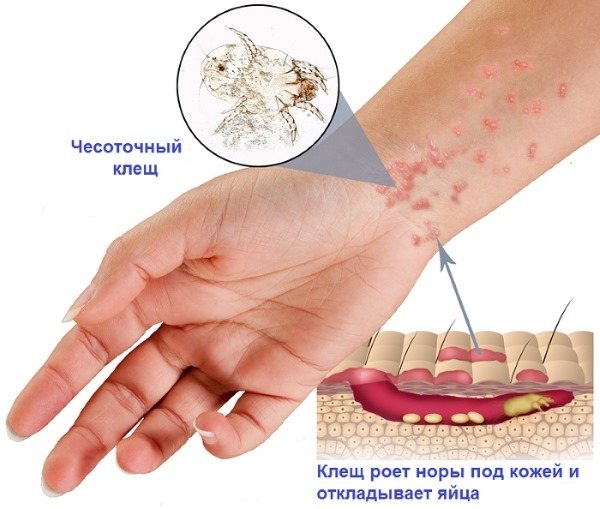
Treatment depends on the triggering factor of the disease. First of all, it is necessary to eliminate all irritants. In addition, disinfecting, softening, exfoliating, regenerating, and immunostimulating agents are used.
Erythema toxicum
This concept refers to the body’s reaction to the influence of various factors in the form of the formation of extensive rashes on the skin. This happens due to the expansion of capillaries due to exposure to allergens. In children after birth, the disease is called erythema toxicum of the newborn.
Photos of rashes with toxic erythema
Symptoms:
- red spots on the dermis, reminiscent of irritation after insect bites;
- upon palpation, a tubercle is felt in the middle of the pimple;
- the rash is localized on the face, legs, arms, chest and other parts of the body;
- the baby becomes capricious and restless;
- with extensive damage to the dermis, the body temperature will rise.
New rashes appear within a few days. After this, the symptoms of erythema begin to subside. Often the pathology has a recurrent form.
Treatment consists of eliminating the allergen that provokes pathological changes in the skin, as well as symptomatic therapy with antihistamines, painkillers, and disinfectants.

Paravirus B19 is considered to be the causative agent of erythema infectiosum. After surviving the disease, a person develops lifelong immunity. In a typical course, a child in the initial stages of the disease develops a slight malaise, and the temperature, as a rule, rises slightly. Later, a slap-shaped rash forms on the cheeks. Later, the rashes spread to other parts of the body. The palms and soles remain unaffected.
Photo of erythema infectiosum
The photo shows that the main location of the rash is on the cheeks. Smaller lesions spread throughout the body. Parvovirus infection in children is treated by maintaining bed rest, using antipyretic drugs, and drinking plenty of fluids. To prevent the addition of a secondary infection, disinfecting solutions are used to treat rashes.
Folliculitis
Folliculitis is a purulent skin lesion that occurs in the form of single or multiple inflammations. The causes of pyoderma in children include:
- viral, bacterial, parasitic lesions of the body;
- hot and humid climate;
- increased sweating;
- swimming in dirty water;
- liver diseases, diabetes mellitus, weakened immunity;
- wearing clothes made of synthetic materials.
The disease can be recognized by pimples that have a purulent filling. In severe cases, the patient experiences pain, itching, and the lymph nodes may become enlarged.
Pimples with white filling due to folliculitis can be seen in the photo
Treatment for folliculitis depends on its severity. For small formations, it is enough to keep the baby’s skin clean and use mild cosmetics to cleanse it. Medical assistance consists of opening the area of suppuration and treating the pimple with disinfecting solutions.
Hives
In childhood, urticaria develops as a response of the body to various external or internal factors. More often, the disease occurs due to the penetration of allergens (food, toxic compounds, medications, etc.) into the body. Less commonly, a rash develops due to internal pathologies in a child (blood disorders, diseases of internal organs).
Photo of hives
The rash in the disease is extensive, rises above the surface of healthy skin, tends to merge
Treatment is carried out with antihistamines. Diazolin, Erius, Citrine, Tavegil have proven themselves well. Cool compresses and baths with anti-inflammatory herbs (chamomile, thyme, string) help relieve itching and relieve swelling.
Impetigo
This concept refers to skin lesions in the form of purulent pimples with a diameter of 3-5 mm, provoked by staphylococci and streptococci. There is no itching or burning. The duration of the disease is approximately 10 days. After this, the skin cleanses itself and no marks remain on it.
Impetigo in the photo

To alleviate the condition of the skin, drying and disinfecting agents are used. In addition, the patient is prescribed an anti-allergenic diet and immunostimulating drugs during illness.
Rashes in children
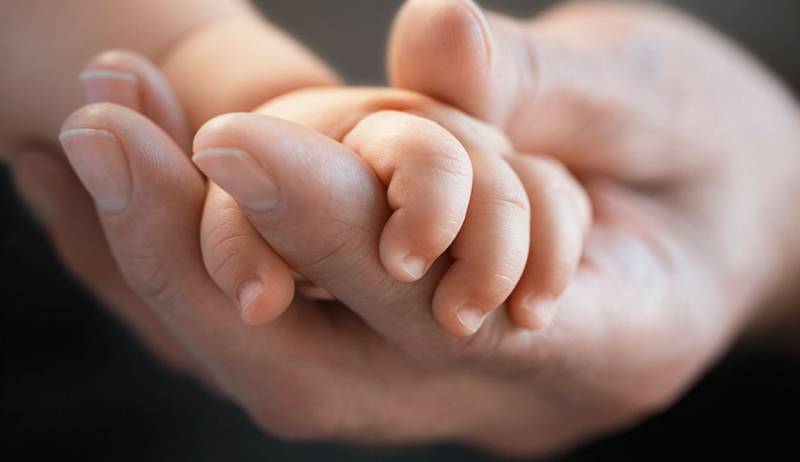
A rash on a child’s fingers is a fairly common phenomenon; most often its appearance is associated with poor hygiene, however, there may be other reasons:
The clinical picture of a rash in a child can be varied. In some cases, the temperature may rise, the child is constantly itching and becomes restless.
It is very important to ensure that the child does not scratch his hands, since this can cause a secondary infection and the child’s condition will worsen.
Causes of rashes
Children's rash can appear on the head, face, arms, legs, neck, back, chest, butt, stomach, elbows, and genital area. The location of pimples, as well as their character, depends on the type of disease that provoked them. The most common causes of pathological changes in the skin are the following factors:
- Disturbances in the composition of the blood. When blood clots poorly, small hemorrhages appear on the skin. This is most typical for meningococcal meningitis.
- Diseases of viral etiology. This group includes measles, chickenpox, infectious mononucleosis, and rubella.
- Bacterial pathologies. A prominent representative is scarlet fever.
- Mechanical factors. If the dermis is damaged, the child may develop a rash in the form of small red dots, blisters, pimples, red or pink spots.
- Allergy. Often, a rash in children appears as a result of insect bites, when the dermis is exposed to household chemicals and some cosmetics. Skin irritation often occurs when eating allergens. Rashes may appear as a response to the use of medications.
We invite you to read Pegano Nutrition for Psoriasis
From the list it is clear that there are quite a few reasons for this condition.
In addition, in many pathologies the rash has a very similar character. Therefore, do not try to independently diagnose a particular condition in your child. This should be done by an experienced dermatologist.
With allergies, skin rashes range from small rashes to ulcers. Accompanied by severe itching. When the allergic reaction is severe, the temperature may rise.
When an allergic rash appears in a child, it is first determined what the body reacted to (food, contact with animals, clothing). You can do this yourself. By exclusion method. But often the help of an allergist is necessary.
If you have a small rash, it is important to choose the right hygiene products - they should contain natural ingredients and have an extremely gentle effect on the affected areas. For example, during the period when a rash appears, you can use La Cree products.
La Cree Emulsion is great for daily use, helping to cope with dry and itchy skin - it can be used at the end of treatment, when the rash has almost disappeared. If you need to cope with the first symptoms of rashes as soon as possible, it is better to use La Cree intensive cream. The natural and safe components included in its composition help stop the manifestations of the rash, and also relieve peeling and itching.
However, remember that skin reactions are often indicators of more serious internal abnormalities, so be sure to visit a doctor and follow the treatment regimen he prescribed.
Diagnostic measures

As soon as a rash appears on your hands, you must immediately contact a dermatologist, because the risk of the rash migrating to other areas of the skin is very high. In this case, the disease will be more severe.
When making a diagnosis, the doctor will take into account the patient’s complaints, examine his skin, conduct an allergy test, and also prescribe a blood test for the presence of other pathologies in the body.
To make the picture of the disease clearer, you need to determine the cause of the rash; this may require consultation not only with a dermatologist, but also with an allergist, immunologist, gastroenterologist, dentist, gynecologist and other specialists.
Laboratory tests for the presence of a rash on the hands are as follows:
Prevention measures
In order to protect yourself from developing rashes on your wrists, hands or palms, you should follow a number of preventive measures. These include:
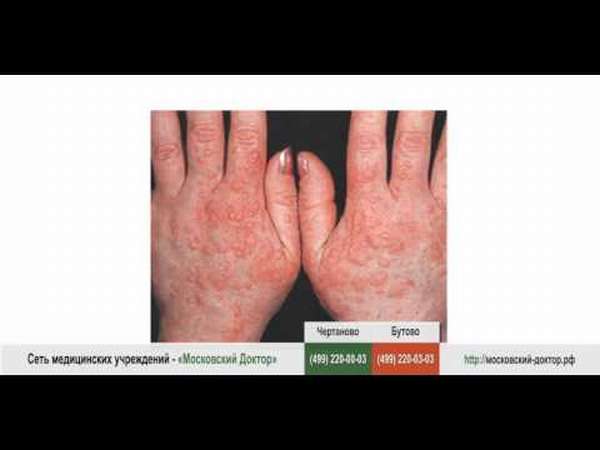
If all preventive measures are followed, the risk of rashes is significantly reduced. The rash is most often allergic in nature. There are many reasons for its appearance, and sometimes it is impossible to accurately determine it on your own. In some cases, using a cream or lotion helps get rid of the rash that appears, but they do not provide relief for itching.
If red spots appear on your hands and begin to itch, you should consult a doctor. Sometimes a rash can indicate the presence of serious pathologies, the treatment of which should be carried out under the supervision of specialists. That is why, if it occurs, you should consult a dermatologist.
News MirTesen
Principles of treatment

It is clear that the treatment of a rash on the fingers will depend on the cause of the pathology:
- Scabies - treatment is prescribed with sulfur ointment, as well as other local drugs.
- Fungal infection - it is necessary to take antifungal agents orally, which are selected taking into account the type of pathogen.
- Chickenpox and other infectious diseases - symptomatic treatment is carried out, which is based on the use of antiseptic solutions.
- Dyshidrosis - it is necessary to take desensitizing and antihistamine drugs.
- Allergies - antihistamines are prescribed orally and glucocorticosteroids externally.
- Hormonal pathologies - it is necessary to stabilize hormonal levels.
- Urticaria - antihistamines are prescribed, as well as dietary supplements.
- Viral infection - it is necessary to determine the type of virus and treat it with appropriate antiviral drugs.
Folk remedies

To alleviate the patient’s condition (eliminate itching, relieve inflammation and return the skin to its former healthy appearance), you can use traditional medicine. However, one must understand that using folk remedies alone is not advisable to influence the cause of the pathology; treatment of a rash on the hands should be based on searching for the cause and traditional treatment. Folk remedies can be used as symptomatic treatment in addition to the main one.
- Motherwort infusion. You will need a glass of boiling water and a tablespoon of dry plant material. Leave for an hour, strain, drink throughout the day.
- Infusion of birch buds. You will need a tablespoon of dry buds and 5 tablespoons of vodka. The buds need to be ground and filled with vodka. Leave for a week and then use to treat affected areas of the skin.
- 20 grams of St. John's wort is poured into 0.5 liters of vodka. After a week, the tincture is filtered and used to treat the skin.
- Grind fresh cucumbers. Pour a tablespoon of gruel into a glass of boiling water, leave for 2 hours, then strain, add a teaspoon of honey. The resulting product can be used to treat not only rashes on the hands, but also acne on the face.
- It is also recommended to take strengthening vitamin preparations. For example, take 10 g of Chinese lemongrass berries, 5 g of elecampane root, 10 g of sage. Mix everything well, pour a tablespoon of the mixture with a glass of water. Boil for 10 minutes, leave, drink chilled with the addition of cinnamon.
On the body (stomach, buttocks, back)
Changes in the appearance of the skin indicate the presence of a pathogenic process in the body.
Certain types of rashes can be caused by toxins, allergens, bacteria or viruses. The main causes of rashes:
- Infectious diseases. In some cases, the type of disease is indicated by the nature of the rash. Thus, the transparent blisters with a red edging characteristic of smallpox are easily recognizable. The rash with rubella and measles resembles allergic rashes, therefore it is necessary to pay attention to other symptoms (enlarged lymph nodes in the first case, cough and runny nose in the second).
- Skin diseases. Before talking about dermatitis, infectious diseases should be ruled out and a number of additional tests should be performed. In adolescence, disruptions of the endocrine system lead to the appearance of acne.
- Allergy. This rash can have different appearances. Sometimes it can be like urticaria. Pink spots that quickly spread throughout the body merge and swell, causing discomfort.
There are many causes of small rashes in a child. Some cases are not dangerous, others indicate more serious problems.
An example of a harmless small rash in infants is neonatal cephalic pustulosis. It appears in 20-30% of babies in the first weeks of life and is not a contagious disease. The reason for such rashes, which look like raised redness, is a large number of yeast bacteria that enter the newborn’s body.
A more serious disease is infant acne (occurs in children aged three months to one and a half years). This rash resembles acne with black and white heads. The reason for its appearance is a violation of androgen levels.
If a child has a small red rash, it can be assumed that prickly heat has developed. This disease is also harmless and non-contagious. Miliaria appears on the bends of the arms and legs, in the folds of the body. Such small rashes indicate that the child often sweats or spends a long time in a wet diaper. The rash will disappear once you eliminate its cause.
Urticaria in a child is most often caused by poor nutrition. Rashes that resemble a nettle leaf burn indicate that an allergen has entered the child’s body with food.
If the baby is still breastfeeding, the mother should review her diet to exclude allergy-causing foods (citrus fruits, red fish, walnuts, beef, milk). When feeding formulas, preference is given to amino acid mixtures or mixtures with a high level of hydrolysis. You should also be very careful when choosing foods for complementary feeding.
To protect your child from rashes caused by contact allergies, take care of his wardrobe. Try to avoid items made from synthetics and wool. Buy hypoallergenic hygiene products. .
There are many types of small rashes that appear on different parts of the human body. We will look at the main ones.
Small rash on the face
A rash in the form of acne on the face most often occurs during puberty. In any case, it is better not to refuse to visit a doctor, otherwise scars may remain at the site of the rash.
The reasons for it are manifold. It could be the same urticaria that occurs in children, or lichen brought in from outside. In addition, in adults, vascular problems can cause a reddish rash.
The rash on the upper extremities is usually allergic in nature. Under the influence of stress, anxiety, and fatigue, it may not disappear for a long time. However, be careful, advanced cases of hand rashes can lead to eczema.
In addition, the hands and feet may become covered with fungal diseases such as psoriasis, scabies or lupus. If there is no rash on other parts of the body, consider options such as heat rash and allergies.
Many infectious diseases can cause a rash on the abdomen. These are the measles and rubella we have already mentioned. Secondary syphilis cannot occur without a pale, small rash on the chest and abdomen. The rash in this case is caused by a huge number of treponemas, tirelessly multiplying and poisoning the body. The rash appears in the shape of a necklace, with rays extending from it.
Red, swollen blisters are characteristic of chickenpox. Their color varies slightly depending on the time of ripening. The use of greenery adds diversity.
Rashes on the back are often allergic in nature and appear after using low-quality tanning creams and prolonged exposure to the sun. The fact is that some substances in such products provoke a protective reaction of the body to ultraviolet rays.
This type of rash is not dangerous if the pimples are not scratched. Otherwise, they may become infected.
The back can also be covered with psoriasis, a chronic skin disease, the cause of which scientists have not yet found. When the white scales are scraped off the pink papules, the spots on the skin turn blood red.
Small rash on neck
There are several causes of rash on the neck. First of all, this is insufficient hygiene. To prevent this problem from occurring, you should remove excess sebum and sweat from your neck, which can clog pores and cause irritation.
Women often experience irritation on their necks due to hormonal imbalances in the body. Another common reason is a malfunction of the gastrointestinal tract.
We invite you to familiarize yourself with Mole on the leg - how are moles checked and by whom? 95 photo and video recommendations for examining a mole
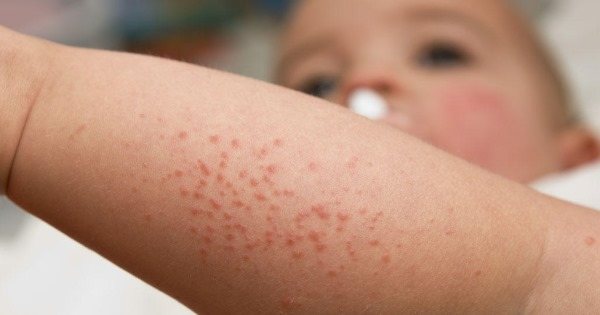
Minor, painless pimples often appear on the face. They disappear pretty quickly, but then appear again. Typically, such rashes indicate problems with the gastrointestinal tract before other symptoms appear.
Small white rash
The appearance of white rashes can indicate a variety of diseases. In children, they are often a consequence of allergies, and when they appear on the body of an adult, they speak of infectious diseases. A white rash on the face occurs as a result of blockage of the sebaceous glands.
Colorless small pimples appear due to vitamin deficiency, hormonal disorders, malfunction of the digestive tract, fungal infections, and also as a result of various types of allergies.
This rash is called hyperkeratosis. Colorless pimples appear on the skin after hypothermia, nervous excitement, or strong emotions. If they do not disappear, it means that there is a malfunction in the body. For example, vitamin deficiency or dermatosis can be expressed this way. The development of hyperkeratosis is also influenced by genetic factors.
The appearance of a rash is often allergic in nature. The rash is usually accompanied by itching. If the child is small, then he will let you know about the discomfort that has arisen by crying.
The rash can be a symptom of: rubella, erythema toxicum, scabies. Or is it the initial stage of chickenpox. When there are problems with blood vessels and clotting, red spots may appear on the body. When they appear, you need to take into account: has the child eaten a new product, has there been a change in powder or brand of diapers. Maybe there was a fever or vomiting before this.
The disease can be identified by the accompanying symptoms. The pediatrician makes the final diagnosis. Even if it is just an allergy, consultation is necessary. You need to find out the type of allergy (food or contact). The disease is dangerous because it is unknown how the body behaves from the inside.
Infectious diseases are dangerous not only due to skin rashes. Their greatest danger lies in complications. Below we discuss which infectious diseases are accompanied by a rash.
It begins with a rash in the mouth, which gradually spreads to the face, and then to the baby’s entire body. The disease occurs at high temperatures. On the 3rd day after infection, a rash (pink spots) appears. At first it looks like hives. But there is no tissue swelling.
The rash is accompanied by severe itching. The spots may merge and occupy an even larger area. With treatment, the rash disappears on the 7th day. The spots begin to fade and peel. If you suspect that a child has measles, you should immediately call emergency help.
Scarlet fever
Small red spots appear on the skin. They are especially concentrated in the bends of the arms and legs. As the spots heal, they begin to peel off. The rash does not cause severe itching. Mainly for peeling. Along with the rash, the child has a severe sore throat and enlarged tonsils.
The temperature remains high and is difficult to lower. If you suspect a child has scarlet fever, call a pediatrician.
Rubella
A rash on a child’s body (photos with explanations are presented below) appears on different parts of the body. The greatest localization of spots is on the face, back, arms and buttocks. The spots first appear on the head, then throughout the body.
Small pink spots appear due to the action of the virus. It damages small blood vessels. The rash does not cause discomfort, does not peel off, and itching occurs in rare cases.
Additional symptoms: swollen lymph nodes, fever, runny nose. The rash goes away within 2-3 days. Treatment is with antipyretics and antihistamines.
Chicken pox
| Disease stage | Type of rash | On what day does it appear? | Itching |
| Onset of the disease | No | 1-2 | No |
| Beginning of rashes | Small red spots | 3-7 | Not strong |
| Change in rash | The appearance of watery bubbles on the spots, over time the liquid becomes cloudy | 4-9 | Eat |
| End of the disease | The bubbles burst and a crust forms | 5-10 | Severe itching |
On what day does the rash appear and when does it begin to change, average readings were taken. How long the disease lasts depends on the individual organism. The chickenpox rash begins under the hair on the head, and then covers the entire body, even the genital area.
Preventive actions
As soon as the rash on the hands has passed and the skin has become healthy again, it is necessary to immediately take preventive measures to prevent relapses. For this it is recommended:
In addition, it is very important to promptly treat all possible diseases, the symptom of which is skin rashes.
Rashes on the hands should in no case be ignored, since they are not only not aesthetic, they attract the attention of others to the hands, but can also be the cause of quite serious diseases, the treatment of which must be high-quality and timely. Only consultation with a doctor and a competent approach to treatment can guarantee complete relief from the rash on the hands.
Watery blisters in a child
A child's skin is sensitive to various irritants.
Sometimes the cause of rashes can be synthetic clothing or prolonged exposure of the baby to the sun. Be sure to read:
Neurodermatitis in adults and children: causes, symptoms and treatment with folk remedies
However, there are a number of diseases that contribute to the formation of vesicles on the skin:
- An allergy, as a result of which a characteristic rash appears on the baby’s arms, neck and cheeks. Allergens can be contained in food, house dust, washing powder, and so on.
- Prickly heat. If there is increased temperature or humidity in the room, then the child may experience blistering rashes on the skin due to prickly heat.
- Chickenpox. An infectious disease transmitted by air or droplets.
- Milli. Occurs due to blockage of the sebaceous glands in an infant.
- Dyshidrosis. As a rule, a blistering rash appears on the palms of babies in the summer or spring months.
Before starting treatment for blistering rashes in children, it is necessary to determine the cause. Today only a dermatologist can do this.
First of all, you need to completely get rid of dust in the room where the baby is. Use only clothes made from natural materials, exclude synthetic items and diapers. It would also be a good idea to regularly ventilate the room. In addition to the prescribed treatment by a doctor, it is also worth protecting the child from stressful situations and maintaining a healthy sleep regime.
You may be interested in an article with recipes for treating dermatitis at home.
There is also an article about the treatment of dyshidrotic eczema of the hands.
You can read how to treat papillomas in intimate places here.

